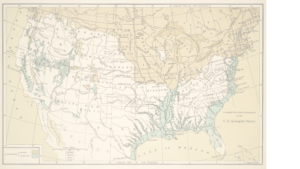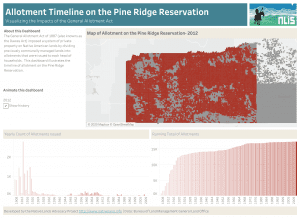THE STATUS OF NATIVE LANDS
The US Bureau of Indian Affairs (BIA) is responsible for the administration and management of 68.5 million surface acres and 57 million acres of subsurface mineral estates held in trust by the United States Government for Native Americans and tribes. But how well are these assets being managed and what data exists to assess the BIA’s performance as Trustee? This topic is focused on presenting the data to begin to answer these questions and more.
Related Data Dashboards
Related Blog Posts

Creating a Historic Loss Assessment, Part 2: Loss of life and Extraction of minerals
By calculating land dispossession, this report seeks to not only identify what has been taken from Native peoples but also how this theft became the original source of capital that built Colorado and the West.

Creating a Historic Loss Assessment, Part 1: Native history and land dispossession
By calculating land dispossession, this report seeks to not only identify what has been taken from Native peoples but also how this theft became the original source of capital that built Colorado and the West.

Introducing the Historic Loss Assessment: Articulating lost lives, land, and resources for the Native Nations in your state
While much of settler colonialism’s harm to Native Nations is unquantifiable, assessments like this provide data that helps tell those Nation’s stories.

Reservation Croplands: How Native Farmers and Ranchers Can Leverage the USDA’s Cropland Data Layer for Land Planning
In 2022, there were about 110 million acres of cropland (5.7%) on Native American reservations (including on-reservation and off-reservation trust lands). What are these croplands and land covers? How have they changed over time? Why does this data matter?

NLAP Collaborates on Special Journal Publication About Tribal Data Sovereignty
NLAP and leading Indigenous scholars write about tribal data accessibility, equity, and sovereignty in “Life and Times of Data Access: Regarding Native Lands.”

Introducing New Resource Tools for Grassland Protection and Restoration
NLAP is happy to announce two new resource tools for grassland and biodiversity protection: our storymap, Grasslands: The Land and the People that Call it Home, and our Conservation Reserve Program Dashboard!












